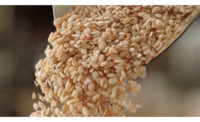My favorite part of fall is the MLB playoffs and World Series.
Though my beloved Brewers fell just short this year, I still enjoy watching baseball. In particular, I enjoy watching the players who have been recently called up from the minors to the Big Leagues for the first time. In baseball, very few players go straight to the majors. Rather — if they are to realize their dreams — they must work their way up through the minors. What does this have to do with food, you may be asking. Well, as it is for baseball players, so too it is for allergens.
The Food Allergen Labeling and Consumer Protection Act of 2004 (FALCPA) amended the Federal Food, Drug, and Cosmetic Act to require that products containing any of the eight major allergens include a “contains” statement declaring the presence of the respective allergen. Presently, the eight major allergens are:
- milk
- eggs
- fish
- crustacean shellfish
- tree nuts
- peanuts
- wheat
- and soybeans.
These are not the only allergens. There are numerous other “minor” allergens.
As we know, sesame is an allergen. Historically, a “minor” allergen. Not one of the “Big Eight.” As of Jan. 1, 2023, however, that is going to change. Sesame is getting called up to the Big Leagues. Congratulations to sesame. No word yet on who sesame’s agent is, but we can say that for any teams wishing to use sesame next year, it will be a different ball game.
As a preliminary matter, labeling sesame as an allergen will not be required on labels of meat and poultry products under FSIS jurisdiction. The April 2021 FASTER Act declared sesame as the “ninth” major food allergen. But FASTER only applies to FDA-regulated products. In turn, though products under FSIS jurisdiction may voluntarily use allergen “contains” statements, they are not required. Voluntary allergen “contains” statements are authorized for generic label approval and do not require submission to FSIS for sketch approval. FSIS permits the voluntary inclusion of sesame and sesame-derived components in “contains” statements.
Collectively, this means that if you’re making open-face sandwiches, you may, but are not required to include a “contains” statement. If it is a closed-face sandwich, a “contains” statement is required. A soup with more than 2% cooked meat does not require a “contains” statement, but a soup with less than 2% cooked meat will require it. We might even equate this to the “balls” and “strikes” in baseball inasmuch as nobody except the umpire is able to clearly define the strike zone.
Jokes aside, with the implementation of any “major” regulatory change, there is always a period of unclarity and confusion. In turn, we recommend any food company using sesame go into extra innings to make sure they are fully aligned with the new and upcoming sesame regulatory requirements.



